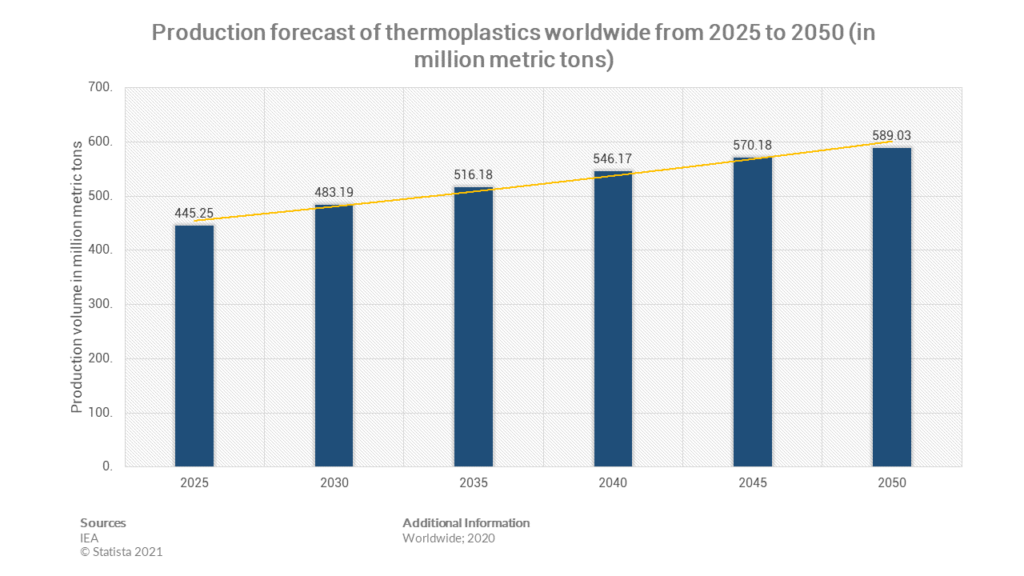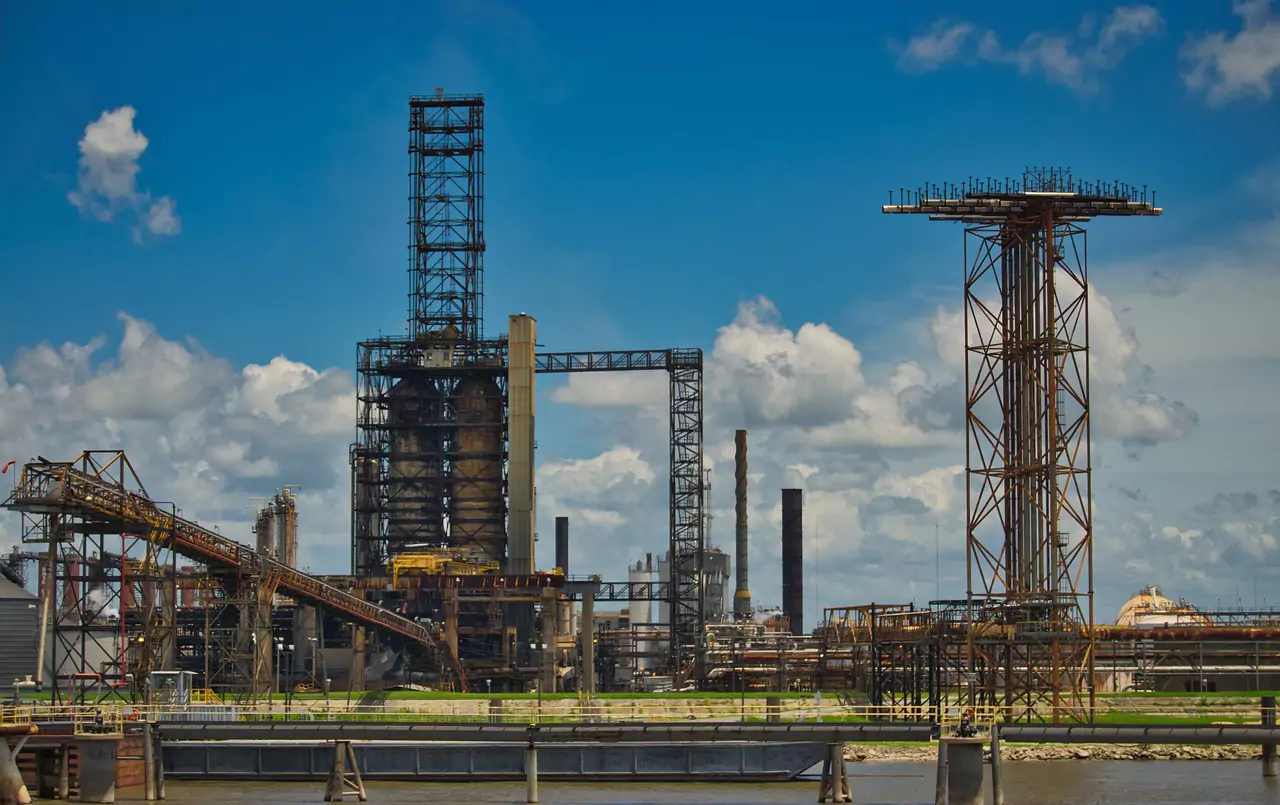Thermoplastics are essential to many manufacturing industries, including automotive, construction, and packaging. With the increasing demand for these materials worldwide, it is projected that the global production of thermoplastics will amount to 445.25 million metric tons in 2025. The BBC has a great introduction on plastics that covers the related processes nicely.
This rise in production can be attributed to several factors, such as the growing population and urbanization, which have increased demand for housing and infrastructure development. Additionally, technological advancements have made it possible to produce high-quality thermoplastic materials that are durable and cost-effective compared to traditional materials like metal or glass. Most commercial and mass produced items of thermoplastics are made with injection molding–which is very cheap at scale.
As countries worldwide continue to prioritize sustainability initiatives, there has been a shift towards more eco-friendly materials. A big problem is mainly single-use plastic items.
Production Forecast of Thermoplastic Worldwide from 2025 to 2050
The world’s dependency on plastic has been overgrown over the past few decades. As a result, the global production forecast of thermoplastics is projected to rise significantly in the coming years. According to recent reports, it is estimated that by 2025, the worldwide production of thermoplastics will reach an astounding 445.25 million metric tons.

Furthermore, this trend is expected to continue, with even more significant growth predicted in subsequent years. By 2030, experts predict that global production will increase to 483.19 million metric tons and continue to rise steadily until it reaches a staggering 516.18 million metric tons in 2035.
According to research, the production of thermoplastic worldwide is set to rise continuously until 2040 and beyond, with an estimated output of 546.17 million metric tons in that year alone. This growth is expected to continue into 2045 when the forecasted production reaches 570.18 million metric tons and increases further by over 589.03 million metric tons in 2050.
The production forecast of thermoplastic worldwide has been on the rise since 2010, with a significant increase in the global production of plastics. Based on statistics, plastic production internationally rose between 2010 and 2020 from 270 million metric tons to almost 370 million metric tons. This represents a staggering increase of almost 40% within a decade.
The growth in plastic production can be attributed to several factors, such as increased demand for packaging materials, construction industry uses, and technological advancements. Furthermore, thermoplastics’ low cost and versatility have made them popular in various industries worldwide. However, this rapid increase in plastic production has come at a considerable cost to our environment. Most plastics are non-biodegradable and can take hundreds of years to decompose properly.
Uncovering the Multiple Factors of Increased Thermoplastic Production
The production growth of thermoplastics can be attributed to several factors, such as their versatility, low cost, and easy processing. Thermoplastics are widely used in various automotive, electronics, packaging, and construction industries. Their unique properties make them the preferred choice for manufacturers looking for alternatives to traditional materials.
One factor behind the rise in demand for thermoplastics is their ability to be molded into complex shapes without losing their mechanical properties. This makes them ideal for use in products that require intricate designs or customized shapes. Additionally, thermoplastics have a high impact resistance, allowing them to withstand harsh environments and extreme temperatures.
Another factor driving the growth of thermoplastic production is their low cost compared to other materials like metal or glass. The ease of processing also contributes significantly by reducing production time and costs associated with development and manufacturing processes.
Furthermore, increasing investment in the automotive industry and growing demand for consumer goods have also contributed significantly to this trend. With these figures in mind, it’s clear that our reliance on plastics isn’t going away anytime soon.
The Largest Thermoplastic Composite Market
The US is the largest thermoplastic composite market in the world. It holds this position due to numerous manufacturers, consumer goods, and industries that rely on these materials for their needs. Thermoplastic composites are used widely across various sectors, such as aerospace, automotive, construction, and electrical. The average US American produces almost 300 pounds of plastic waste annually, the highest in the world and mainly of thermoplastic origin.
The growth of the US thermoplastic composites market can be attributed to several factors. Firstly, there is a high demand for lightweight and durable materials that can withstand extreme temperatures and weather conditions. Secondly, with an increasing focus on sustainability and environmental concerns in recent years, thermoplastic composites have emerged as a viable alternative to traditional materials due to their recyclability properties.
Moreover, advancements in production technologies have made it easier for manufacturers to produce high-quality thermoplastic composites at lower costs.
Wrapping Up
According to various reports, the thermoplastic industry is expected to grow exponentially in the coming years. This growth trend is fuelled by increasing demand for thermoplastics in many industries, such as automotive, construction, and packaging. The production forecast of thermoplastic worldwide shows that this industry is an excellent investment opportunity due to its prospects for continued growth.
As more companies switch from traditional materials to thermoplastics, investors can expect a steady increase in demand for these products. With advancements in technology and manufacturing processes, the cost of producing thermoplastics has significantly reduced over time. As such, manufacturers can now produce these plastics at a lower price while maintaining high-quality standards.
In conclusion, with the production forecast of thermoplastic worldwide indicating continued growth opportunities, investors should consider this industry a viable option for their portfolio.




